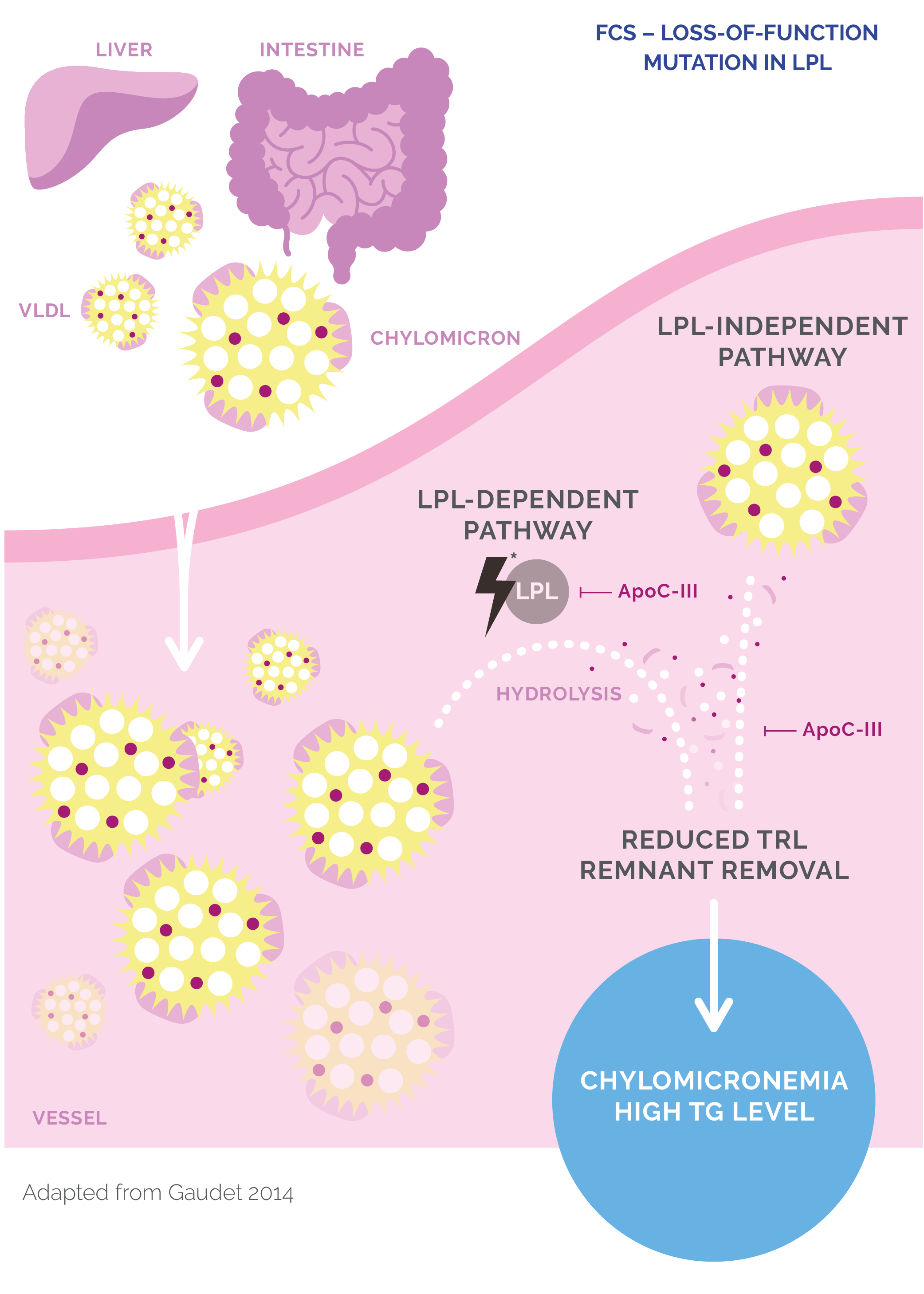FCS is associated with limited functionality of lipoprotein lipase (LPL). The loss of functionality in LPL makes the LPL-pathway inefficient and leads to accumulation of chylomicrons in the blood.1
LPL pathway is the primary mechanism by which plasma triglycerides (TGs) are hydrolysed leading to subsequent efficient removal. Apolipoprotein C-III (ApoC-III) modulates triglyceride levels primarily by inhibiting the LPL-dependent pathway but also the LPL-independent pathway.1
Triglycerides enter the blood plasma from dietary fat absorption in the intestine, in the form of chylomicrons, and from the liver, in the form of very low-density lipoprotein (VLDL) particles.1
Loss-of-function mutations in LPL make the LPL-pathway inefficient and lead to accumulation of chylomicrons in the blood.1

![]() Limited functionality.
Limited functionality.
ApoC-III: apolipoprotein C-III, FCS: familial chylomicronemia syndrome, LPL: lipoprotein lipase, TG: triglycerides, TRL: triglyceride-rich lipoprotein, VLDL: very low-density lipoprotein
Adapted from Gaudet D et al. N Engl J Med 2014;371(23):2200–6 and Crooke RM. Expert Opin Biol Ther 2005;5(7):907–17.
▼ This medicinal product is subject to additional monitoring. This will allow quick identification of new safety information. Healthcare professionals are asked to report any suspected adverse reactions. Adverse events should be reported. Reporting forms and information can be found at www.mhra.gov.uk/yellowcard. Adverse events should also be reported to Swedish Orphan Biovitrum Ltd at [email protected] or Telephone +44 (0) 800 111 4754



